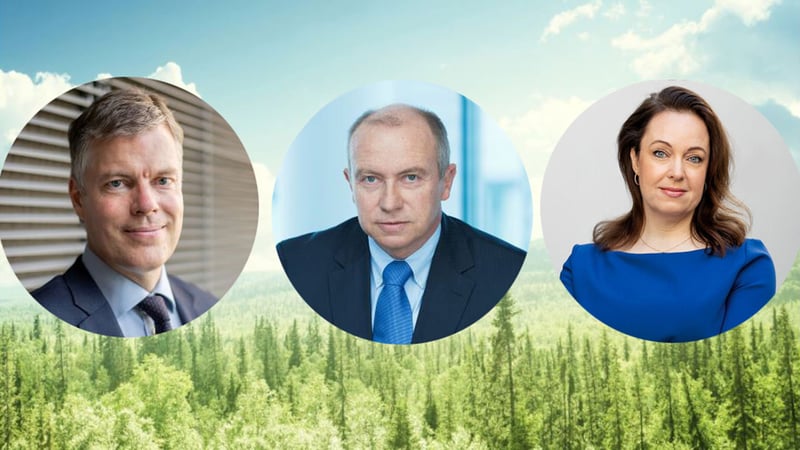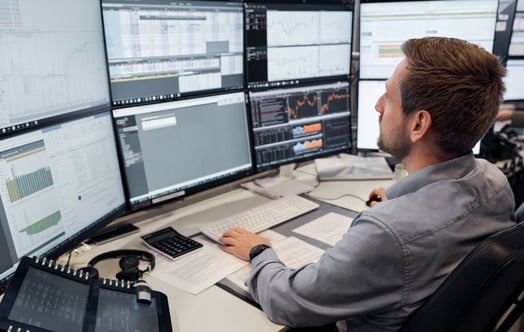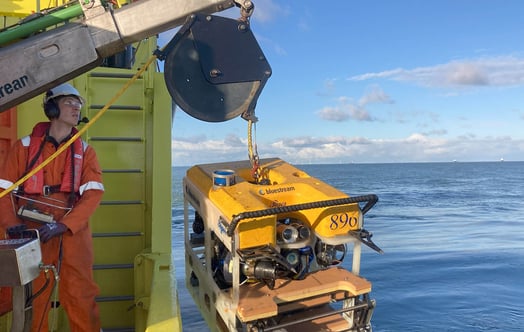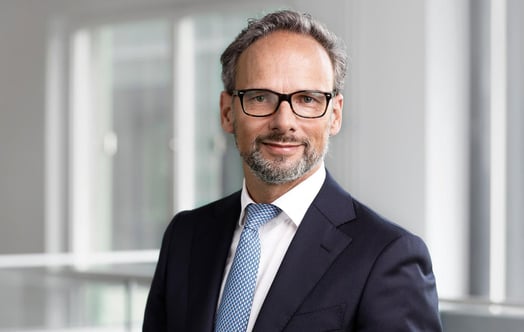Nordic energy utilities call for swift revision of the EU 2030 climate and energy legislation
Fortum, Statkraft and Vattenfall, the three largest Nordic energy utilities welcome the EU’s revised 2030 climate target of at least -55% as a crucial step on the path towards 2050 climate neutrality.

Markus Rauramo, President and CEO of Fortum, Christian Rynning- Tønnesen, President and CEO of Statkraft and Anna Borg, President and CEO of Vattenfall
The three Nordic utilities want to highlight three key elements with regard to a swift adjustment of the EU 2030 climate and energy policy framework:
1) Strengthening and enlarging the EU ETS as a key driver for decarbonisation
We fully agree with the Commission's commitment to the EU ETS as the core climate policy instrument. In our view, carbon pricing should be applied as broadly as possible in the economy, possibly supported by other instruments particularly in the non-ETS sectors. We propose a two-step approach for the Commission’s upcoming legislative proposal for the revised EU ETS directive:
- i. Focus on a swift revision of the current EU ETS:
- Align the Linear Reduction Factor (LRF) with the new EU 2030 climate target from 2023.
- Secure a strong Market Stability Reserve (MSR) that can tackle unforeseen imbalances and policy overlaps also beyond 2023. This includes a permanent “intake rate” of 24 % and a narrowing of the activation threshold band (400-833 Mt) to reflect gradually declining hedging needs.
- ii. Introduce carbon pricing in other sectors like maritime, heating of buildings and transport, possibly through separate transitional ETS with a plan for future integration under the current EU ETS cap.
2) Enhancing electrification to accelerate the decarbonisation of the EU economy
Direct and indirect electrification is not only the most cost-efficient solution and main instrument for decarbonising other sectors, but also contributes to realizing energy efficiency gains and sector integration. Clean hydrogen should complement the use of carbon free electricity specifically in hard-to abate industrial and transport sectors.
Substituting fossil fuels with electricity will lead to significant increases in demand for electricity and clean gases. We remain fully committed to satisfy this demand with our already large and growing carbon-free asset basis.
3) Strengthening cost efficiency and markets through technology neutrality
The complementarity of technologies plays a key role in keeping transition costs down and making the energy transition affordable to customers. In this respect, we suggest to
- Safeguard the technology neutrality principle in the Taxonomy Regulation by ensuring that the screening criteria are defined objectively and applied evenly in order to enable a full utilization of existing and new carbon-free power production assets to cost-efficiently deliver on the EU climate neutrality objective.
- Promote well-functioning power markets and allow support for less-mature technologies in a transitional phase, such as Carbon Contracts for Difference to cover the cost gap between conventional and low-carbon technologies, and avoid market distortions stemming from such support. It is also key to maintain the unbundling principle for ownership and operation of storage and supply of required flexibility.
- Stimulate the demand for carbon free energy carriers in order to speed up investments in generation assets and infrastructure. Ensure the strengthening of grids and interconnectors across EU regions to enable the full potential of carbon free electricity and clean hydrogen.
About the Nordic Coalition:
Christian Rynning-Tønnese, President and CEO of Statkraft
Christian Rynning-Tønnesen has been the CEO of Statkraft since 2010 and has previously held various positions in the company’s top management from 1992-2005. Rynning-Tønnesen is actively engaged in energy and climate related topics and is a member of The Global Commission on the Economy and Climate. From 2005-2010 he worked as CFO and CEO iof the paper producer Norske Skog. He holds a Master of Science from the Norwegian Institute of Science and Technology.
Statkraft is a leading company in hydropower internationally and Europe’s largest generator of renewable energy. As a global company in energy market operations with 4,000 employees in 17 countries, the Group produces hydropower, wind power, solar power, gas-fired power and supplies district heating. Electricity has transformed humanity, but the biggest source of this electricity, fossil fuels, threatens our planet. Renewable energy can’t be part of the solution - it must be the solution. A carbon free future requires three things: a diversity of renewables, smart strategies to manage them effectively, and profitability. Making this possible is what Statkraft does best. We advocate for predictable regulatory frameworks which strengthen markets as the most efficient way to realize the transition. Statkraft has been making clean energy possible for over a century, and we invest 100% of our growth entirely in renewable energy technologies.
Anna Borg, President and CEO of Vattenfall
Anna Borg is President and CEO of Vattenfall AB as per 1 November 2020. In the period 1999 t0 2014, Anna Borg kept various positions at Vattenfall, in strategy, business development, sales and from 2017 to 2020 as CFO. From 2015 to 2017, she was Senior Vice President at Klarna. She holds Master degree in Economics and Political Science from Uppsala University.
Vattenfall is a European energy company with approximately 20,000 employees. For more than 100 years we have electrified industries, supplied energy to people's homes and modernized our way of living through innovation and cooperation. Our goal is to make fossil-free living possible within one generation. Everything we do and the decisions we take shall lead to this goal. This is the basis of Vattenfall’s strategy, and we advocate for a regulatory environment that makes this transition possible – in the energy sector and beyond in transport, industry.
Markus Rauramo, President and CEO of Fortum
Markus Rauramo is the President and CEO of Fortum Corporation as of July 2020. Mr Rauramo has been serving Fortum since 2012 as CFO and as Executive Vice President Fortum’s consumer and heat businesses. Prior to joining Fortum, Mr Rauramo worked for Stora Enso, one of the world’s largest forest industry companies in various international strategy and finance positions. Markus Rauramo holds a Master’s Degree in Economics and Political History from the University of Helsinki.
Fortum is a European energy company with approximately 19,000 professionals and activities in more than 40 countries. We provide our customers with electricity, gas, heating and cooling as well as smart solutions to improve resource efficiency. Together with our subsidiary Uniper, we are the third largest producer of CO2-free electricity in Europe. Our purpose is to drive the change for a cleaner world. We are securing a fast and reliable transition to a carbon-neutral economy by providing customers and societies with clean energy and sustainable solutions



